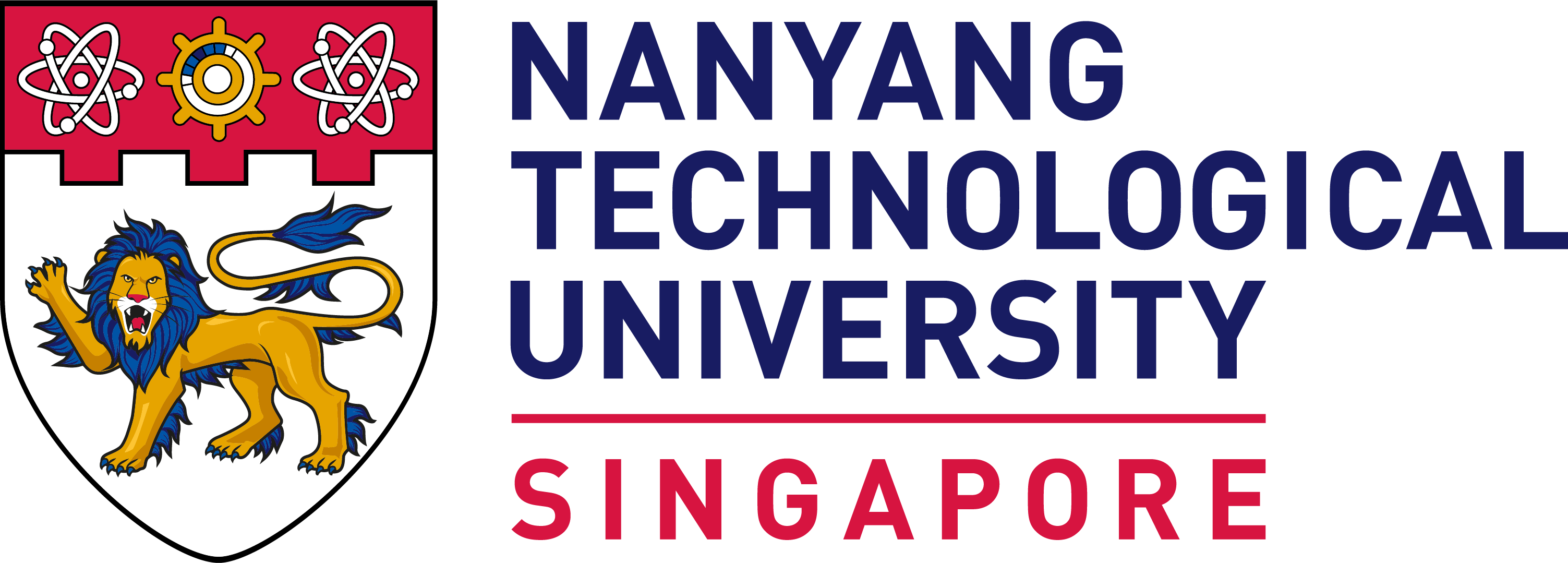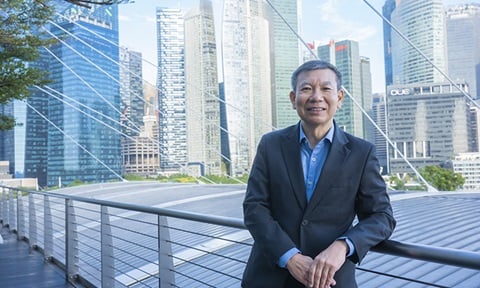At this residential campus, the path is lit for disadvantaged students to fulfil their dreams
- Co-ed residential campus =Dreams opened the doors to its first intake in January this year
- The campus aims to provide after-school academic and holistic support to disadvantaged students between the ages of 13 and 18
- To be considered for admission, scholars – as the students are called – must be residing in a rental flat
- The scholarship covers the fees for their lodging, meals on campus, and tuition and enrichment classes
- As the campus concludes its first year of operations, TODAY speaks to =Dreams scholars, parents and sociologists to find out how the programme has panned out
SINGAPORE — Secondary 2 student Rayyan Fahim loves to draw, and dreams of working in an animation studio when he grows up.
Since moving into =Dreams, a new co-ed residential campus, in January this year, the 14-year-old has been inching closer to his goals.
“One of the mentors here, Mr Felany, has art experience. So I’m hoping that I can learn from him on how to do the basics of animation,” said Rayyan.
Beyond this, he has also dipped his toes in three-dimensional (3D) printing as part of his extracurricular activities while living on campus. He has even visited Temasek Polytechnic to learn more about the technology.
For Rayyan, =Dreams is a home away from home.
Envisioned as a programme to build dreams and equalise opportunities, the new co-ed residential campus provides after-school academic and holistic support to disadvantaged students between the ages of 13 and 18.
Located at 99 Haig Road, the site of the old Geylang Serai Community Club, the campus opened its doors to its first batch of scholars, as the students are called, in January this year.
To be considered for admission, scholars must be Singaporeans or permanent residents. They must also be residing in a rental flat under the Housing and Development Board’s (HDB) public rental scheme.
Those who are successful receive a scholarship that covers the fees for their lodging, meals on campus, and tuition and enrichment classes.
The programme does not replace academic education for the scholars, who still attend schools under the Ministry of Education.
Ms Juliet Tanuwira, the executive director of =Dreams, said that the campus was established to serve the lower-income communities – particularly those living in HDB public rental flats.
Children from some of these families face significant disadvantages due to financial limitations and other circumstances and, as a result, may find themselves caught in a cycle of generational poverty, she pointed out.
“Despite existing policies aimed at social mobility, these children may internalise perceptions that they cannot achieve more,” said Ms Tanuwira.
As such, =Dreams aims to “provide opportunities to those whose environments limit their chances of success”, she added.
Today, 25 scholars aged 13 to 14 reside on campus from Monday to Thursday, though the team is working to bump this figure up to 240 in future.
The scholars shuttle between the =Dreams premises and their respective schools on weekdays, before returning home on Friday to spend the weekend with their families.
They return to the campus on Sunday evening to gear up for the new week.
Besides addressing their basic daily needs and providing them with a “positive and conducive environment”, =Dreams also offers tailored support to its scholars, said Ms Tanuwira.
This could look like academic support – rendered through twice-weekly Mendaki tuition, or separate “study buddy” sessions where student volunteers from nearby Victoria Junior College visit the campus to help scholars in their studies.
It could also take the form of extracurricular activities designed to meet scholars’ own goals and personal interests.
“We believe that every young person possesses virtues and talents, which may not always manifest through traditional academic channels,” said Ms Tanuwira.
“The =Dreams scholarship signifies more than just financial support; it’s about opening doors for these young individuals. Equally important, it’s about fostering a mindset that encourages them to explore and recognise their unique abilities.”
SETTING GOALS, ESTABLISHING CLEAR EXECUTION PLANS
For 13-year-old Martin Low, the scholarship presents opportunities to pursue a sport he loves: Badminton.
He gets to play it a lot more because there are dedicated badminton courts on campus, and it’s also where he got connected with other badminton lovers.
On top of weekly practice sessions on Wednesdays, the group also gathers off-campus every Saturday to train together.
“I find (these sessions) helpful in training my mentality and strength,” said Martin, adding that training with his peers encourages him to persevere even when he’s tired, which in turn builds his resilience and stamina.
Martin hopes to secure a spot on his school’s badminton co-curricular activity (CCA) team and to excel in the sport, which has been his passion since he was in Primary 3.
“I want to carry the school team, and to make them the top one in Singapore,” said Martin.
In future, he also wants to carve a career out of his passion, by becoming a badminton coach.
On how being at =Dreams has helped Martin, his mother, 38-year-old Sally Low, said there is a strong network of “supporters” at the campus. These include tuition teachers, coaches, mentors and more.
This team helps Martin and the scholars to discover where their talents lie, said Mrs Low.
“Whatever the scholars are good in, these supporters will ask them to go for it. Like if you have talent in badminton, usually you just play badminton,” she said.
“But at =Dreams, they’ll also get a coach to teach you. At home, if we have low income, we cannot do it.”
Having Martin on campus also gives his father, 47-year-old Low Beng Hwee, peace of mind.
Mr Low, who works long hours as a hawker with his wife, said that he used to worry about what his son would get up to outside of school hours.
“He’s in his teenage years, and my wife and I are both working, so it’s hard for us to see him and take care of him,” said Mr Low in Mandarin.
“Now, we don’t have to worry about where he is, or whether he does his homework. The staff at =Dreams always encourages and guides him. And when he faces any problems, he can also seek help from them.”
Having Rayyan grow up in the campus’ environment was also a huge draw for his parents, Mr Muhammad Hisham, 44, and Ms Diyana, 45.
The couple have two other children: Two daughters aged 23 and 21.
The family of five live together in a two-room rental flat. His parents share a room, while Rayyan and his sisters share the unit’s living room.
“With my house, it’s so cramped, and Rayyan is growing up. I really, really think he needs his own space – a comfortable one,” said Ms Diyana.
She believes that Rayyan’s excursions to Temasek Polytechnic and the Google Singapore office have given him a clear idea of what he wants to do.
Ms Diyana said: “He knows what’s the plan and what he’s supposed to do to reach his goals.”
NARROWING THE EXPECTATION GAP
Dreams and aspirations are crucial because they serve as motivation for positive change, experts say.
And while all groups – regardless of socio-economic status – hold high aspirations, different groups have learned to expect differently, said Dr Vincent Chua, an associate professor of sociology at the National University of Singapore.
“Class has a conditioning effect on expectations and behaviours. Some (academic) scholars believe that the underprivileged have become accustomed to facing barriers in life,” he said.
In contrast, wealthy families “see the future as expansive and filled with possibility”, he added.
While lower-income families also wish for their children to do well in life, they tend to have less concrete or accurate information about the educational and career pathways open to more privileged social groups, said Dr Yang Peidong, an assistant professor at the National Institute of Education whose research interest includes sociology of education.
These children are thus more likely to aspire towards “more realistic prospects” – ones that are closer to their own lived experiences, he added.
This is where a facility like =Dreams could help.
For one thing, mentoring can reshape expectations by exposing less privileged individuals to important resources and contacts that then pave new possibilities, said Dr Chua.
Such a centre, which is premised on social mixing and the matching of mentors with underprivileged children, can expand the social circles of less privileged children, he added.
“Social mixing facilitates the flow of resources to enrich, empower and energise the hopes of disadvantaged youth.”
This is what resonates with Martin’s mother, Mrs Low.
“His dreams are growing now. I have a feeling that his life will be better than ours, because he is in a good environment,” she said.
“Now, he doesn’t know his talents, or what he wants yet. But give it a few more years… I think he will know what he wants, and he will know what his purpose is.”
=Dreams also hosts events — including an upcoming 3D printing workshop on Nov 18 — that are open to scholars and interested families with youths who are eligible and eager to explore its scholarship. To find out more, call 6992 2838 or email admissions@dreamssingapore.org.sg.
Read the original article here.
Source: TODAYOnline © Mediacorp Pte Ltd. All rights reserved




.tmb-listing.jpg?Culture=en&sfvrsn=13b00373_1)


